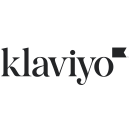Feeling a sense of belonging at work is about more than catching up with a teammate about weekend plans. It’s about more than having the freedom to take a cultural or religious holiday off from work, no questions asked. And while an essential component, it’s about more than feeling like you can show up to work as your authentic self.
Other people should want to show up for you, too.
Belonging, at its root, is not only about feeling accepted by a community, but included within it. Yet as tech organizations look to expand, how can that inclusion exist with co-workers coming from increasingly diverse backgrounds and locations?
For many, the answer lies in building out a successful employee resource group (ERG) program.
Studies show that ERGs and employee satisfaction are intertwined. In fact, organizations with sustainable diversity, equity and inclusion (DEI) initiatives demonstrated a 20 percent increase in inclusion, which corresponded to greater on-the-job effort and retention, as well as high employee performance, according to a 2022 study by Gartner. ERGs can also help level the professional playing field by uniting employees and leadership across an organization.
“Participation and advocacy — especially from senior leadership — are critical to ensuring that ERG programs are successful,” said Faridah Bori, user operations team lead at The Predictive Index. “Executive buy-in is a great way to ensure the ERGs are fully ingrained into the culture of the company.”
Creating bonds through ERGs serves other important purposes — like showing employees of diverse backgrounds where their career paths can take them. In March, for example, SNL cast member Bowen Yang told Out Magazine that he found comfort working with seasoned LGBTQ+ Hollywood namesakes like Kate McKinnon and Margaret Cho. Yang said he felt as if he was part of something bigger than himself, where diversity can be given a space to shine and spark hilarious moments for the world to enjoy.
To employees at Klaviyo, Yang’s work represented something equally important to them.
“In June, our Asian & Pacific Islander and LGBTQ ERGs came together to host Bowen Yang,” said DEI Program Manager Nick LaRoche. “He talked with Klaviyo about excelling in under-represented spaces and living out our authentic identities in the workplace.”
While ERG programs might look different from company to company, it’s clear that building internal communities and bringing like-minded people together exudes big benefits. Built In Boston caught up with Bori, LaRoche and Ahold Delhaize USA’ HR Business Partner Sarah Dudan to learn how they launched successful ERGs from the ground up — and which DEI-driven events helped their employees feel like they truly belong.

In your experience, what is required to make an ERG program successful?
Participation and advocacy — especially from senior leadership — are critical to ensuring that ERG programs are successful. Executive buy-in is a great way to ensure the ERGs are fully ingrained into the culture of the company. ERGs can impact business outcomes by enhancing productivity through increased employee retention and engagement. Securing executive sponsorship is a great way to build advocacy among leadership.
ERGs require a budget, structure and the ability for ERG leaders to prioritize the time commitment as part of their overall responsibilities and workload — not just a side project. To ensure ERG leaders did not feel pressure to work on ERG-related tasks outside of their working hours, we outlined the roles and responsibilities for all ERG stakeholders. In piloting ERGs, we took an inclusive approach to get feedback from a mix of people on the desired impact they saw ERGs having on PI’s culture.
ERGs should also have success metrics to help them define the measured outcomes for the group and the company. This allows them to evaluate progress routinely to ensure alignment with their goals, while allowing them to continuously show their value added to the company.
What are some common mistakes companies make when implementing ERGs?
One common mistake that companies make when implementing ERGS is not leveraging their allies appropriately. Allies can be huge advocates for ERGs, helping to increase engagement and spread the impact.
Another challenge is the prioritization of ERG responsibilities: ERG members should not feel like they have to bargain to take time off to participate in ERG activities or risk penalization by their manager. If ERG members constantly feel like they have to catch up on work in order to participate, it will lead to lower attendance and decrease the engagement and impact that the ERG is able to have.
ERGs also need to secure buy-in from their members. If the members of the ERG aren’t included in the decision making, the strategy might miss key opportunities to make the strongest impact. Members should provide feedback on the initiatives that are most important to them, directly influencing the ERG strategy. Some ERGs are event-focused because they lack buy-in and miss out on opportunities like professional development or programs that would strengthen their foundation.
ERGs require a budget, structure and the ability for leaders to prioritize the time commitment as part of their overall responsibilities and workload — not just a side project.”
Describe a recent event that one of your ERGs spearheaded. What was the occasion, and how did your broader team participate?
Our Queer@PI ERG spearheaded a Pride event this past June that was both educational and celebratory. C-suite members moved calendar meetings to attend, signifying their commitment and approved the suspension of PI’s live support service to ensure ALL staff could participate. Throughout the highly-attended hybrid event, ERG members shared their personal and workplace experiences.
We also hosted a Pride trivia to mix fun and learning with facts about the history of Pride and anecdotes to highlight challenges that the LGBTQ community faces. With the success of the event, we plan to hold more educational events throughout the year to consistently celebrate Pride year-round, and not only during Pride month.

In your experience, what is required to make an ERG program successful?
A successful ERG program starts with leaders and employees who exhibit a genuine curiosity to listen and learn about the life experiences of those who are marginalized and underrepresented. These leaders and employees demonstrate care and empathy for those who may not have access to the same opportunities as others in the workforce, as well as a desire for positive change. They have the courage and commitment to stand with a company’s diverse workforce — especially when they are not at the table or in the room.
Inequality in the workplace didn’t happen overnight, and making progress in those areas won’t either. It’s important to give people grace to make mistakes, a safe space to learn from each other and the resources to help move the mission of the ERG forward.
Lastly, leaders need to be visible. People show up and invest time in the areas that are most important to them. Employees need to see that their leaders are committed through words as well as actions.
What are some common mistakes companies make when implementing ERGs?
Common mistakes I’ve observed in implementing ERGs are leaders who provide financial support but withhold their most valuable resource: time. A leader who doesn’t give their time can come across as disingenuous, making employees question the leader’s commitment to the ERG’s goals. Additionally, pushing too hard too fast without understanding organizational readiness for needed change creates distrust in both leaders and employees.
Organizations need to demonstrate their commitment to the advancement and value of ERGs by holding their employees accountable. If an ERG’s work is not used as a measure of success in the company’s overall goals, then ERG members will question how important that work truly is to the organization.
Employees need to see that their leaders are committed through words as well as actions.”
How are your team members or related ERGs celebrating Hispanic Heritage Month this year?
Last year we hosted a panel discussion on colorism in honor of Hispanic Heritage Month. It was an incredibly powerful and often unrealized topic — not just for the Black community, but also the Hispanic community. It gave participants an opportunity to learn from the life experiences of panelists as they spoke of their experiences with colorism, oftentimes within their own race. They shared powerful data and examples of how colorism can show up in the work environment, and the profound impact it can have on advancement opportunities and how it personally affects them as individuals.
The forum served as a safe space to learn and ask questions we normally wouldn’t be comfortable asking because the moderator, Senior Manager of DEI&B Deanna Morgan, really set the stage for psychological safety by providing guidelines for courageous conversations.
In your experience, what is required to make an ERG program successful?
I think our ERGs have been so successful because we set them up to be grassroots, self-sustaining groups. For us, that means providing tools like budget and executive sponsorship, and ensuring they tie to business initiatives. We set an intention early on for these groups to create space for people from historically underrepresented communities to have a voice and a presence, so that when we hire candidates from diverse backgrounds they feel like they can bring their authentic selves to work.
What are some common mistakes companies make when implementing ERGs?
I think companies often err by putting all the work on their employees from marginalized backgrounds, essentially asking them to start a group without any guidance or support. At Klaviyo, it was important to us to make sure we had internal structure and resources to offer before kicking off our ERG program.
It was important to us to make sure we had internal structure and resources to offer before kicking off our ERG program.”
Describe a recent event that one of your ERGs spearheaded. What was the occasion, and how did your broader team participate?
In June, our Asian & Pacific Islander and LGBTQ ERGs came together to host Bowen Yang of the podcast Las Culturistas, Saturday Night Live and the movie Fire Island. He talked with Klaviyo about excelling in under-represented spaces, living out our authentic identities in the workplace and more. This event was special because so many different teams came together to produce it: finance, legal, learning and development, and employee engagement. I think this really shows how deeply embedded DEI is here at Klaviyo — it doesn’t matter what team you work on, because this is everyone’s work.











